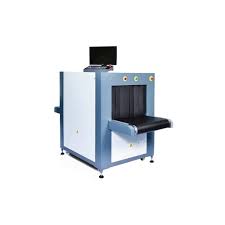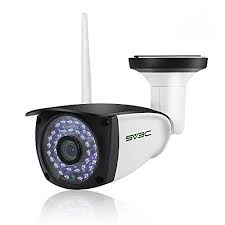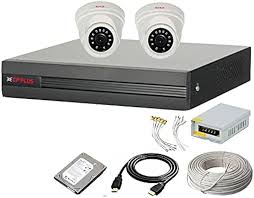In today’s fast-paced world, security is a top priority in various settings, including airports, train stations, malls, and government buildings. One of the key tools used to ensure safety and security is the baggage scanner.
A baggage scanner is a sophisticated piece of equipment designed to inspect the contents of luggage quickly and efficiently. It plays a crucial role in detecting prohibited items such as weapons, explosives, and other dangerous materials that may pose a threat to public safety.
Baggage scanners work by using X-ray technology to create images of the contents of a bag or suitcase. These images are then analyzed by trained security personnel to identify any suspicious items that may require further inspection. In addition to X-ray technology, some advanced baggage scanners also use computed tomography (CT) scanning for more detailed imaging.
The use of baggage scanners has significantly enhanced security measures at transportation hubs and other high-traffic locations. By providing security personnel with detailed images of luggage contents, these scanners help prevent potential threats from entering secure areas.
Moreover, modern baggage scanners are equipped with advanced features such as automatic threat detection algorithms and real-time image analysis software, making the screening process more efficient and accurate.
Overall, baggage scanners play a critical role in maintaining public safety and security in today’s world. Their ability to quickly and accurately detect potential threats helps ensure that passengers and visitors can travel and move about in public spaces with peace of mind.
Understanding Baggage Scanners: A Guide to Their Function, Importance, and Passenger Impact
- What is a baggage scanner?
- How does a baggage scanner work?
- What technology is used in baggage scanners?
- Why are baggage scanners important for security?
- Are baggage scanners safe for passengers’ belongings?
- Can baggage scanners detect all types of prohibited items?
- How are suspicious items identified during the scanning process?
- Are there different types of baggage scanners available?
- What should passengers do when their luggage triggers an alert on the scanner?
What is a baggage scanner?
A baggage scanner is a vital security tool used in various settings like airports, train stations, and government buildings to inspect the contents of luggage for prohibited items. This sophisticated equipment utilizes X-ray technology to create detailed images of the items inside a bag or suitcase. These images are then analyzed by trained security personnel to identify any potential threats such as weapons, explosives, or other dangerous materials. By providing a quick and efficient way to screen luggage, baggage scanners help enhance security measures and ensure the safety of individuals in public spaces.
How does a baggage scanner work?
Baggage scanners work by utilizing X-ray technology to create detailed images of the contents of luggage or bags. When a bag is passed through the scanner, it is exposed to X-ray beams that penetrate through the materials, creating a shadow-like image on the screen. Different materials absorb X-rays differently, allowing security personnel to identify objects based on their density and composition. The generated images are then analyzed by trained operators to detect any suspicious items that may pose a security risk. In addition to X-ray technology, some advanced baggage scanners also use computed tomography (CT) scanning for more precise and detailed imaging, providing an even higher level of security screening.
What technology is used in baggage scanners?
Baggage scanners typically use X-ray technology to inspect the contents of luggage and detect any prohibited items. X-ray technology allows baggage scanners to create detailed images of the items inside a bag or suitcase, which can then be analyzed by security personnel for potential threats. In addition to X-ray technology, some advanced baggage scanners also utilize computed tomography (CT) scanning for more precise imaging and threat detection. These technologies enable baggage scanners to efficiently and effectively screen luggage for weapons, explosives, and other dangerous materials, enhancing security measures at transportation hubs and other high-security locations.
Why are baggage scanners important for security?
Baggage scanners are essential for security because they play a crucial role in detecting prohibited items such as weapons, explosives, and other dangerous materials that may pose a threat to public safety. By using advanced X-ray and computed tomography (CT) scanning technology, baggage scanners provide security personnel with detailed images of luggage contents, allowing them to identify any suspicious items quickly and accurately. This proactive approach helps prevent potential threats from entering secure areas such as airports, train stations, malls, and government buildings, thus enhancing overall security measures and ensuring the safety of passengers and visitors.
Are baggage scanners safe for passengers’ belongings?
One frequently asked question regarding baggage scanners is whether they are safe for passengers’ belongings. Baggage scanners are designed to safely and non-invasively inspect the contents of luggage without causing any harm to the items inside. The X-ray technology used in baggage scanners is specifically calibrated to scan and detect potential threats without damaging electronic devices, clothing, or other personal belongings. Additionally, security personnel are trained to handle luggage with care during the screening process to minimize any risk of damage. Overall, baggage scanners are considered safe for passengers’ belongings and play a crucial role in ensuring the safety and security of all individuals in transit.
Can baggage scanners detect all types of prohibited items?
While baggage scanners are highly effective in detecting a wide range of prohibited items such as weapons, explosives, and sharp objects, it is important to note that they may not be able to detect every single type of prohibited item. Some items, especially those made of non-metallic materials or hidden in a particular way, may not be easily identified by standard baggage scanners. This is why security personnel undergo rigorous training to interpret scanner images accurately and may conduct additional manual inspections if necessary. While baggage scanners are a crucial tool in maintaining security, they are just one part of a comprehensive security screening process that also includes physical checks and other security measures.
How are suspicious items identified during the scanning process?
During the scanning process, suspicious items are identified through a combination of advanced technologies and trained security personnel. Baggage scanners use X-ray technology to create detailed images of the contents of luggage, allowing security personnel to examine the items inside. Suspicious items are typically identified based on their shape, density, and material composition, which may differ from typical items found in luggage. Additionally, baggage scanners are equipped with automatic threat detection algorithms that can flag items that match certain criteria known to be associated with prohibited or dangerous objects. Trained security personnel carefully analyze the X-ray images and use their expertise to identify any potential threats accurately.
Are there different types of baggage scanners available?
Yes, there are different types of baggage scanners available to cater to various security needs and requirements. The most common types of baggage scanners include X-ray scanners, CT scanners, and dual-energy scanners. X-ray scanners use X-ray technology to create images of the contents of luggage, while CT scanners provide more detailed 3D images for enhanced threat detection. Dual-energy scanners are capable of distinguishing between organic and inorganic materials, making them effective in identifying potential threats. Each type of baggage scanner has its own advantages and applications, allowing security personnel to choose the most suitable scanner based on the level of security needed and the specific environment in which it will be used.
What should passengers do when their luggage triggers an alert on the scanner?
When a passenger’s luggage triggers an alert on the scanner, it is essential for them to remain calm and cooperate with security personnel. In such situations, passengers should follow instructions given by the security staff and be prepared for additional screening of their luggage. It is important to be honest and transparent about the contents of the bag if asked by authorities. By remaining patient and compliant, passengers can help expedite the screening process and ensure that security measures are carried out effectively to maintain a safe environment for all travelers.



